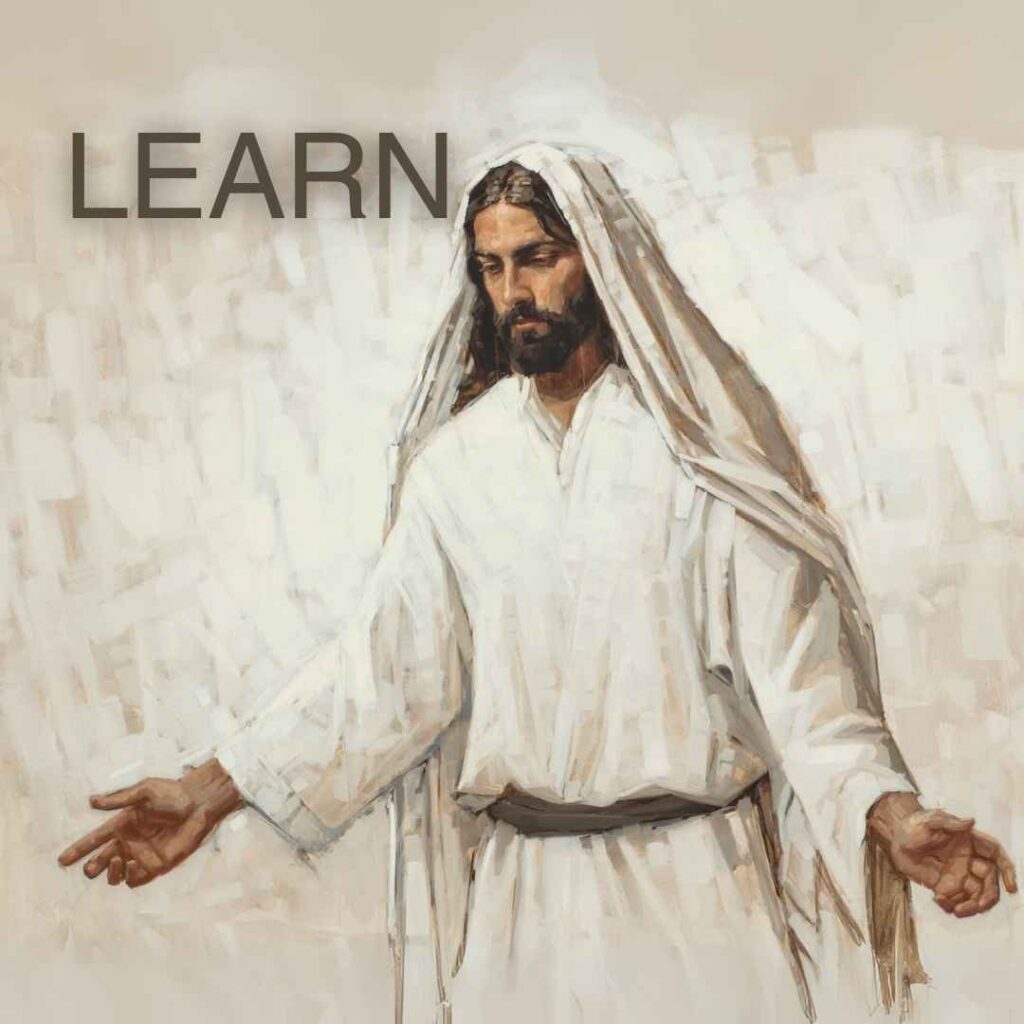
Experience the Greater Love of Jesus Christ this Easter
This Easter, we invite you to discover the greater love of Jesus Christ—a love that led Him to serve, sacrifice, and rise again. His resurrection gives us hope, healing, and the promise of eternal life. Join us in celebrating His love through study, service, and sharing His message.
Common Questions About Easter in the Church of Jesus Christ of Latter-day Saints
Do Latter-day Saints diminish the importance of Jesus Christ and His atonement?
Latter-day Saints do not diminish the importance of Jesus Christ and His Atonement; rather, they consider it the central doctrine of their faith. Joseph Smith taught that the fundamental principle of the Church is the testimony of Jesus Christ’s death, burial, resurrection, and ascension. Leaders such as B.H. Roberts and Howard W. Hunter have declared the Atonement as the heart of the Gospel, essential to salvation and the foundation of all other doctrines and practices.
Throughout the Church’s history, leaders have consistently affirmed that salvation comes only through Christ’s atoning sacrifice. Brigham Young, Joseph F. Smith, and Gordon B. Hinckley emphasized that rejecting the Atonement undermines the foundation of faith. President Heber J. Grant declared that those who do not acknowledge Jesus Christ as the Redeemer should not be associated with the Church. For Latter-day Saints, the Atonement is not just a doctrine but the essence of their hope and faith.
For more in-depth insights and teachings from Church leaders on this topic, read the complete article here.
How do Latter-day Saints understand the significance of Christ’s death on the cross?
Latter-day Saints understand Christ’s death on the cross as an essential part of His Atonement, offering redemption from sin and the promise of resurrection. Scriptures such as the Book of Mormon, Doctrine and Covenants, and modern teachings consistently affirm that Jesus’ crucifixion was foreordained and central to God’s plan. Leaders from Joseph Smith to Gordon B. Hinckley have emphasized that through His voluntary sacrifice, Christ fulfilled His divine mission to redeem humanity from both spiritual and physical death.
While some may perceive a lack of emphasis on the cross, Latter-day Saints deeply revere Christ’s suffering and recognize it as the culmination of His mission. They believe His atoning sacrifice extends beyond the cross to include His suffering in Gethsemane and His resurrection. Worship practices, including the sacrament, honor His sacrifice and remind members of His infinite love and grace. For Latter-day Saints, the cross is not just a symbol but a profound manifestation of Christ’s saving power.
For more insights and teachings on this topic, read the complete article here.
How do Latter-day Saints understand the significance of the blood shed by Christ?
Latter-day Saints understand the blood shed by Christ as essential to the Atonement, providing redemption from both original sin and personal transgressions. Joseph Smith taught that without the shedding of Christ’s blood, there could be no remission of sins, and Brigham Young emphasized that Christ’s sacrifice cleanses from all sin through repentance and faith. This understanding negates the need for infant baptism, as little children are redeemed through His Atonement and are considered “alive in Christ.”
The blood of Christ is seen as the means through which humanity is brought back into God’s presence, overcoming the consequences of the Fall. Leaders from Joseph F. Smith to Marion G. Romney have emphasized that forgiveness and spiritual renewal come through the power of His atoning blood. The sacrament serves as a sacred reminder of His sacrifice, symbolizing the cleansing and redemptive power available to all who follow Him in faith and repentance.
For more insights and teachings on this topic, read the complete article here.
How do Latter-day Saints view the extent of the atonement of Jesus Christ?
Latter-day Saints believe that the Atonement of Jesus Christ is infinite and universal, extending to all who have ever lived or will live on the earth. They reject the notion that the Atonement is limited only to believers or those who lived after Christ’s death. Instead, they affirm that Christ’s sacrifice offers redemption from both physical and spiritual death for all humankind, allowing every soul the opportunity to accept or reject the gift of salvation.
The concept of unlimited atonement aligns with biblical teachings and has been supported by many Christian scholars throughout history, including John Calvin and other influential theologians. While some denominations restrict the scope of the Atonement, Latter-day Saints assert that its benefits are offered universally. They emphasize that salvation is contingent on accepting Christ’s gift through faith, repentance, and obedience, while honoring human agency to choose or reject the blessings made available through His sacrifice.
For more in-depth insights and teachings from Church leaders on this topic, read the complete article here.
How does the Latter-day Saint view of the Atonement compare to the evangelical Christian view?
Latter-day Saints and evangelical Christians both affirm that salvation comes through the Atonement of Jesus Christ, but they differ in their understanding of its scope and application. Evangelicals typically view the Atonement as a singular event on the cross, fully complete through grace for believers. In contrast, Latter-day Saints see the Atonement as a continuous process beginning in Gethsemane and culminating on the cross, encompassing both resurrection for all and exaltation for the faithful through grace and obedience.
Latter-day Saints also believe that Christ’s Atonement applies universally to all who have ever lived, offering resurrection and the opportunity for salvation, while evangelical Christians often limit its application to believers only. The Latter-day Saint perspective harmonizes grace and works, emphasizing that accepting Christ’s gift through faith, repentance, and obedience is necessary to fully receive its blessings. In both views, Jesus’ sacrifice remains central to salvation, but the LDS understanding extends its reach to all humankind.
For more in-depth insights and teachings from Church leaders on this topic, read the complete article here.
How do Latter-day Saints view the historical position of the Christian church with regard to the atonement of Jesus Christ?
Latter-day Saints view the historical position of the Christian Church regarding the Atonement as complex and evolving, recognizing that no universally accepted theory has emerged throughout Christian history. While modern evangelical Christianity often emphasizes the crucifixion as the singular atoning event, Latter-day Saints align more closely with early Christian perspectives that see the Atonement as a process involving Gethsemane, the cross, and the resurrection. This holistic view reflects the gradual development of atonement theories over centuries.
Christian scholars, including Leon Morris and J.N.D. Kelly, acknowledge that the New Testament lacks a singular atonement theory, and historical Christian thought has encompassed various interpretations. Early Christian views often emphasized Christ’s victory over sin and death through multiple stages of His mission, rather than solely His death on the cross. Latter-day Saints embrace this broader perspective, seeing the Atonement as a continuous process that includes both His suffering and triumph, consistent with ancient Christian teachings.
For more in-depth insights and teachings from Church leaders on this topic, read the complete article here.
Why don’t Latter-day Saints observe Palm Sunday like many other Christian religions?
Latter-day Saints do not specifically observe Palm Sunday as many other Christian denominations do, because their worship pattern does not follow the traditional liturgical calendar. Instead, they focus on renewing their covenants with Christ through the sacrament each Sunday. This ordinance, which commemorates His atoning sacrifice, centers on remembering His body and blood, and is a weekly opportunity to reflect on His triumph and mission, rather than highlighting individual events from His life.
Elder Ronald A. Rasband taught that discipleship is not limited to special observances but should be woven into everyday life. Latter-day Saints honor Christ’s atoning mission by striving to live faithfully, keeping His commandments, and taking His name upon themselves through covenant renewal. While the triumphal entry into Jerusalem is a significant scriptural event, members honor the Savior continually, not just on specific holidays, by living as devoted disciples throughout the week and partaking of the sacrament regularly.
For more in-depth insights and teachings from Church leaders on this topic, read the complete article here.
How is the atonement of Jesus Christ portrayed in Latter-day Saint hymns?
Latter-day Saint hymns consistently emphasize the central role of Jesus Christ’s Atonement, portraying His sacrificial death on Calvary as essential for humanity’s redemption. From early hymns compiled by Emma Smith to the modern hymnbook, themes of Christ’s suffering, crucifixion, and resurrection are frequently expressed. Hymns like O God, the Eternal Father and How Great the Wisdom and the Love testify of His blood freely shed and His life given to save a sinful world, highlighting the Savior’s infinite love and mercy.
The hymns also reflect the doctrine that the Atonement encompasses both His suffering in Gethsemane and His death on the cross, portraying His sacrifice as a continuous process. They emphasize Christ as the “sacrifice offered” and the “Lamb forever slain,” whose spilled blood redeems all who follow Him. Whether written by early Church members or adapted from Christian traditions, these hymns teach devotion, gratitude, and reverence for Christ’s atoning mission.
For more in-depth insights and teachings from Church leaders on this topic, read the complete article here.

Celebrate Easter with Us
Find a local congregation of the Church of Jesus Christ of Latter-day Saints to worship with this Easter.
The Case for the Resurrection: Apologetic Arguments for the Greatest Miracle
The resurrection of Jesus Christ is the cornerstone of Christian faith, as it affirms His divine identity and victory over death. Without the resurrection, Christianity would lose its foundation, reducing Jesus to a mere moral teacher rather than the Son of God.
As a result, skeptics have long challenged the credibility of this miraculous event. Apologetic arguments for the resurrection are essential because they provide rational, evidence-based responses to these challenges, strengthening the faith of believers and inviting honest seekers to consider the truth of the resurrection. The following points outline the most compelling reasons to believe in the historical reality of Christ’s resurrection.
The resurrection of Jesus Christ is supported by multiple independent lines of evidence, including the empty tomb, eyewitness testimonies, transformation of the disciples, and lack of credible counter-explanations. Together, these factors present a compelling case for the resurrection as a historical event.
The Empty Tomb
The tomb where Jesus was buried was found empty by women on the third day. This is significant because women’s testimony was culturally considered unreliable (in first-century Jewish and Roman contexts, women’s testimonies were often dismissed or given little weight), making it unlikely to be fabricated as a convincing story. Additionally, neither the Jewish nor Roman authorities could produce Jesus’ body, despite having strong motivation to disprove resurrection claims.
Eyewitness Testimonies
Numerous individuals and groups, including skeptics, claimed to have seen the risen Jesus. These appearances were reported by over 500 people at once (1 Corinthians 15:6), making the possibility of mass hallucination extremely improbable. Skeptics like Paul and James also experienced personal encounters that radically changed their lives.
Transformation of the Disciples
Before the resurrection, the disciples were fearful and in hiding. Afterward, they boldly preached about Christ’s resurrection, even under threat of persecution and death. Their unwavering testimony and willingness to suffer indicate they truly believed what they proclaimed.
Early Creeds and Writings
The resurrection message was not a later development. Early Christian creeds, such as those found in 1 Corinthians 15:3-8, emerged within just a few years of Jesus’ death. This rapid transmission of belief makes it highly unlikely that the resurrection was a legendary development.
Martyrdom of the Apostles
Many apostles and early Christians willingly faced torture and execution rather than deny the resurrection. People rarely die for something they know to be false, and there is no evidence suggesting that any apostle recanted their testimony.
Conversion of Skeptics
Significant figures like Paul, a persecutor of Christians, and James, Jesus’ skeptical brother, became ardent believers after claiming to see the risen Christ. Their dramatic transformations add credibility to the reality of the resurrection.
Explosive Growth of the Early Church
The rapid and widespread growth of Christianity cannot be explained merely by social or cultural factors. The message of the resurrection spread powerfully despite fierce opposition, persecution, and martyrdom. A falsehood would not likely inspire such devotion and sacrifice.
Lack of a Plausible Counter-Explanation
Alternative theories, such as the disciples stealing the body, mass hallucination, or the swoon theory, fail to account for the historical evidence. They are inconsistent with the facts of the empty tomb, the transformation of witnesses, and the willingness of the apostles to die for their testimony.
Jewish Context and Prophecy Fulfillment
While the resurrection fulfilled Old Testament prophecies (e.g., Psalm 16:10, Isaiah 53), the crucifixion and resurrection of Jesus Christ did not fit Jewish expectations of a messiah. The unexpected nature of the resurrection narrative strengthens the case for its authenticity. If the disciples were fabricating the resurrection, they would likely have created a story more consistent with Jewish messianic expectations to make it more convincing to their audience. Instead, they proclaimed something shocking and countercultural, which suggests they were reporting what they genuinely believed happened, rather than constructing a legend to fit cultural norms.
In apologetics, the point is that the resurrection narrative goes against what the Jewish audience would have naturally expected or wanted to believe. This unexpected nature lends credibility to the claim that the story arose from real events rather than being crafted to fit preconceived ideas.
Historical Consistency and Multiple Sources
The resurrection accounts are found in multiple independent sources within the New Testament and early Christian writings. These accounts, though differing in minor details, consistently affirm the core claim that Jesus rose from the dead, strengthening the case for historical reliability.
The resurrection of Jesus Christ is supported by multiple independent lines of evidence, including the empty tomb, eyewitness testimonies, transformation of the disciples, and lack of credible counter-explanations. Together, these factors present a compelling case for the resurrection as a historical event.
Restoration Witnesses: Apologetic Arguments for the Resurrection of Jesus Christ
The reality of Jesus Christ’s resurrection is fundamental to Christian faith, affirming His triumph over death and solidifying His role as the Son of God. Traditional apologetics present compelling evidence through ancient scriptures and eyewitness accounts, but the restoration of the Gospel of Jesus Christ through The Church of Jesus Christ of Latter-day Saints offers additional powerful witnesses.
Modern revelation and restored doctrines not only validate ancient testimonies but also introduce new insights that strengthen belief in the resurrection. The following points outline how the restoration uniquely supports the reality of Christ’s triumph over death.
Additional Witnesses and Scripture
The Book of Mormon provides independent, ancient testimony of the risen Christ. In 3 Nephi 11, Jesus Christ appears to the Nephites after His resurrection, allowing them to feel the wounds in His hands and feet. This separate record strengthens the case for the resurrection by offering another credible, ancient account of the event.
Modern-Day Witnesses
Latter-day Saints believe that the resurrected Christ appeared to Joseph Smith and others in the latter days. These encounters, such as the First Vision and Christ’s appearance in the Kirtland Temple (D&C 110), testify of His living reality and ongoing ministry. These modern witnesses mirror the experiences of New Testament disciples and provide additional support for the claim of His resurrection.
Apostolic Authority Restored
With the restoration of the Melchizedek Priesthood and the calling of modern apostles, Latter-day Saints believe that the same apostolic witness of the resurrection present in ancient times continues today. This restored authority and witness are seen as a continuation of the New Testament Church’s testimony.
Prophetic Testimony
Modern prophets and apostles consistently testify that Jesus Christ lives and has been seen and spoken to by modern witnesses. The consistency and clarity of their testimonies add a contemporary witness to ancient scriptural accounts, emphasizing that the resurrection is not just a past event but an ongoing reality.
Restoration of Doctrinal Clarity
The restored Gospel clarifies the nature and purpose of the resurrection. It teaches that Christ’s victory over death applies to all mankind through universal resurrection and to the faithful through eternal life. This doctrine resolves debates among Christians regarding who benefits from the resurrection and how it is applied.
The Doctrine of the Plan of Salvation
The restoration teaches that the resurrection is part of a grand, eternal plan, not just an isolated miracle. This plan, outlined in the Book of Mormon and Doctrine and Covenants, shows that Christ’s resurrection is the central event in the Father’s work to bring immortality and eternal life to humanity.
Sacred Ordinances and Covenants
The sacrament, as restored in modern times, emphasizes remembering Christ’s body and blood, reinforcing the reality of His physical resurrection. Temple ordinances, which point to resurrection and exaltation, further affirm that Christ’s risen state is not just symbolic but a tangible, glorified reality.
Witness of the Holy Ghost
The restoration emphasizes the role of the Holy Ghost in bearing witness to the reality of the resurrection. Through personal revelation, countless Latter-day Saints testify that they know by the Spirit that Christ lives.
The restoration of the Gospel of Jesus Christ through modern revelation and prophetic witness provides robust apologetic support for the reality of the resurrection. It not only reaffirms the testimonies of ancient witnesses but also offers new, contemporary confirmations that Jesus Christ lives and reigns. The power and clarity of these restored truths strengthen faith and invite the world to know for themselves that He is risen.
These resources can help you make Easter more than just a holiday—it can become a sacred time to remember Christ’s Greater Love (John 15:13). Use them in a way that works best for your family, and let Easter be a season of faith, not just a single day.


Easter is a time to reflect on the incomparable love and sacrifice of Jesus Christ. Whether you are sharing the message of the Resurrection with fellow Christians, introducing it to those unfamiliar with its significance, or finding renewed faith during a personal crisis, we have resources to help you teach and testify of Christ’s redeeming power.
Our lesson outlines are designed to meet diverse needs and perspectives, offering thoughtful insights, scripture references, and practical application ideas. Let these resources help you strengthen your own testimony while inviting others to experience the transformative love of the Savior.
Serving as the Savior Did
Easter is a celebration of Christ’s ultimate act of love—His atoning sacrifice. One way to make Easter last all year is to follow His example of service.


How to Live Easter Through Service

- Look for ways to serve without expecting anything in return.
- Ask yourself: Who needs my love today?

- The resurrection promises reunion and joy—share that hope with those who are struggling.

- Create Easter baskets for a shelter
- Help others in need, just as Christ lifted the downtrodden



